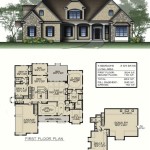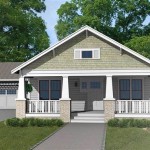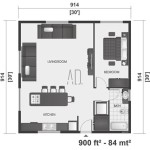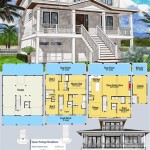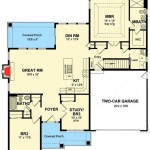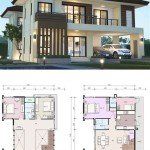House Plan With Indoor Pool: A Luxurious and Practical Addition
The inclusion of an indoor pool within a house plan represents a significant investment aimed at enhancing both lifestyle and property value. It transcends the limitations of seasonal weather, providing year-round aquatic enjoyment and recreational opportunities within the comfort and privacy of the home. This article delves into the various aspects of incorporating an indoor pool into a house plan, considering design considerations, structural demands, heating and ventilation requirements, and the overall benefits and challenges associated with such a feature.
The notion of an indoor pool often conjures images of opulent residences, but the reality is that this feature can be tailored to a range of architectural styles and budgets. Careful planning and consideration of various factors are critical to a successful implementation, ensuring not only aesthetic appeal but also long-term functionality and efficiency.
Key Considerations for Indoor Pool Design
Integrating an indoor pool into a house plan requires meticulous attention to detail, far beyond simply designating a space and installing a pool. Several key factors must be addressed during the design phase to ensure a functional, safe, and aesthetically pleasing outcome. These factors directly influence the structural integrity of the building, the comfort of the occupants, and the long-term operational costs of the pool.
Pool Size and Shape: The dimensions of the pool must be determined based on intended use and available space. A purely recreational pool for relaxation and leisure swim may differ considerably in size and shape from a lap pool designed for exercise. Consideration should also be given to the number of people who will typically use the pool simultaneously. The shape can range from classic rectangular designs to freeform shapes that complement the overall architectural style. However, complex shapes often increase construction costs and can complicate maintenance.
Pool Location and Orientation: The location of the indoor pool within the house plan is crucial. Ideally, it should be situated in a location that maximizes natural light while minimizing direct sunlight exposure, which can contribute to algae growth and increased chemical consumption. Orientation relative to prevailing winds and surrounding landscaping can also influence energy efficiency and ventilation requirements. Accessibility from other living areas, such as the kitchen, living room, or bedrooms, should also be considered for convenience.
Surrounding Space and Amenities: The area surrounding the pool is just as important as the pool itself. Adequate deck space is necessary for lounging, walking, and access to the pool. The flooring material should be slip-resistant and durable to withstand the constant exposure to moisture. Consideration should also be given to incorporating amenities such as showers, changing rooms, restrooms, and potentially even a sauna or hot tub, depending on the desired level of luxury and available space.
Aesthetic Integration: The indoor pool should be seamlessly integrated into the overall architectural design of the house. This involves selecting materials, finishes, and lighting that complement the existing style. Large windows or skylights can create a sense of openness and bring the outdoors in, while carefully chosen lighting fixtures can create a relaxing and inviting atmosphere. The color palette should be harmonious and contribute to the overall ambiance of the space.
Structural and Engineering Requirements
The structural and engineering demands of an indoor pool are significant and must be addressed by qualified professionals. The weight of the pool water itself, along with the associated equipment and potential snow loads, can place considerable stress on the building's foundation and supporting structure. Furthermore, the high humidity levels associated with indoor pools can lead to moisture problems and structural damage if not properly managed.
Foundation and Load Bearing: The foundation must be designed to support the weight of the filled pool, as well as the additional weight of surrounding decking, equipment, and potential occupants. Soil conditions must be thoroughly investigated to ensure adequate bearing capacity. Load-bearing walls and columns may need to be reinforced to accommodate the additional load. In some cases, specialized structural engineering may be required to distribute the weight evenly and prevent settling or cracking.
Waterproofing and Moisture Control: Proper waterproofing is essential to prevent water damage and moisture penetration into the surrounding structure. This involves using high-quality waterproof membranes on the pool shell and surrounding surfaces. Adequate drainage systems are also necessary to prevent water from accumulating around the pool. Vapor barriers should be installed in the walls and ceilings to prevent moisture from migrating into the building's structure.
Ventilation and Dehumidification: High humidity levels are a major concern in indoor pool environments. Without proper ventilation and dehumidification, moisture can condense on walls, ceilings, and windows, leading to mold growth, corrosion, and structural damage. A dedicated dehumidification system is essential to remove excess moisture from the air. The system should be sized appropriately for the pool size and usage patterns. Ventilation is also important to introduce fresh air and remove stale air, further contributing to a healthy and comfortable indoor environment.
Heating and Plumbing: The pool water needs to be heated to a comfortable temperature, typically between 80 and 85 degrees Fahrenheit. This can be achieved using various heating systems, such as gas heaters, electric heaters, or heat pumps. The plumbing system must be designed to circulate the water, filter it, and add chemicals to maintain water quality. Efficient filtration systems are essential to remove debris and impurities from the water, while chemical feeders automatically dispense the necessary chemicals to maintain proper pH balance and sanitize the water.
Operational Considerations and Long-Term Maintenance
While the initial design and construction of an indoor pool are significant undertakings, the ongoing operational costs and maintenance requirements should also be carefully considered. These long-term expenses can significantly impact the overall affordability of owning an indoor pool.
Energy Consumption: Indoor pools are energy-intensive due to the heating, ventilation, and dehumidification requirements. The energy consumption can be reduced by using energy-efficient equipment, such as high-efficiency heaters, pumps, and dehumidifiers. Proper insulation of the pool shell and surrounding walls can also help to minimize heat loss. Covering the pool when it is not in use can significantly reduce energy consumption by minimizing evaporation and heat loss.
Chemical Usage and Water Quality: Maintaining proper water quality requires regular testing and chemical adjustments. The frequency of testing and the amount of chemicals required will depend on the pool size, usage patterns, and water source. Automated chemical feeders can help to maintain consistent water quality and minimize the need for manual adjustments. Regular draining and refilling of the pool may also be necessary to prevent the buildup of minerals and other impurities.
Regular Maintenance and Inspection: Regular maintenance is essential to prevent problems and prolong the life of the pool and its equipment. This includes cleaning the pool, checking the filters, inspecting the pumps and heaters, and monitoring the water chemistry. Regular inspections of the pool structure and surrounding area are also necessary to identify and address any potential problems, such as cracks, leaks, or moisture damage. Addressing these issues promptly can prevent more serious and costly repairs down the line.
Professional Services: While some maintenance tasks can be performed by the homeowner, it is often advisable to engage professional pool service companies for more complex tasks, such as equipment repairs, water balancing, and leak detection. These professionals have the expertise and equipment to ensure that the pool is properly maintained and that any problems are addressed promptly and effectively.
The integration of an indoor pool into a house plan offers a luxurious and practical amenity that can enhance the quality of life for homeowners. However, careful planning, meticulous execution, and ongoing maintenance are essential to ensure a successful and sustainable outcome. By addressing the design considerations, structural requirements, and operational challenges discussed in this article, homeowners can create an indoor pool that provides years of enjoyment and adds value to their property.

Indoor Pool House Mansion Floor Plan Plans

Striking Home Plan With Indoor Pool 72402da Architectural Designs House Plans

Luxury French Country Home Plan With Courtyard And Indoor Pool 290110iy Architectural Designs House Plans

Contemporary Style House Plan 2 Beds 3 Baths 2283 Sq Ft 60 763 Shed Plans Indoor Pool

Indoor Swimming Pool And Jacuzzi Area Free Design 3d House Ideas Marina G By Planner 5d

3 Bedroom House Plan With Swimming Pool H7

Indoor Swimming Pools House Plans And More

House Plans Pool Courtyard Plan W72108da Wrap Around Central With Large New Indoor

Indoor Swimming Pools House Plans And More

Villa Belle House Plan Sater Design Collection

